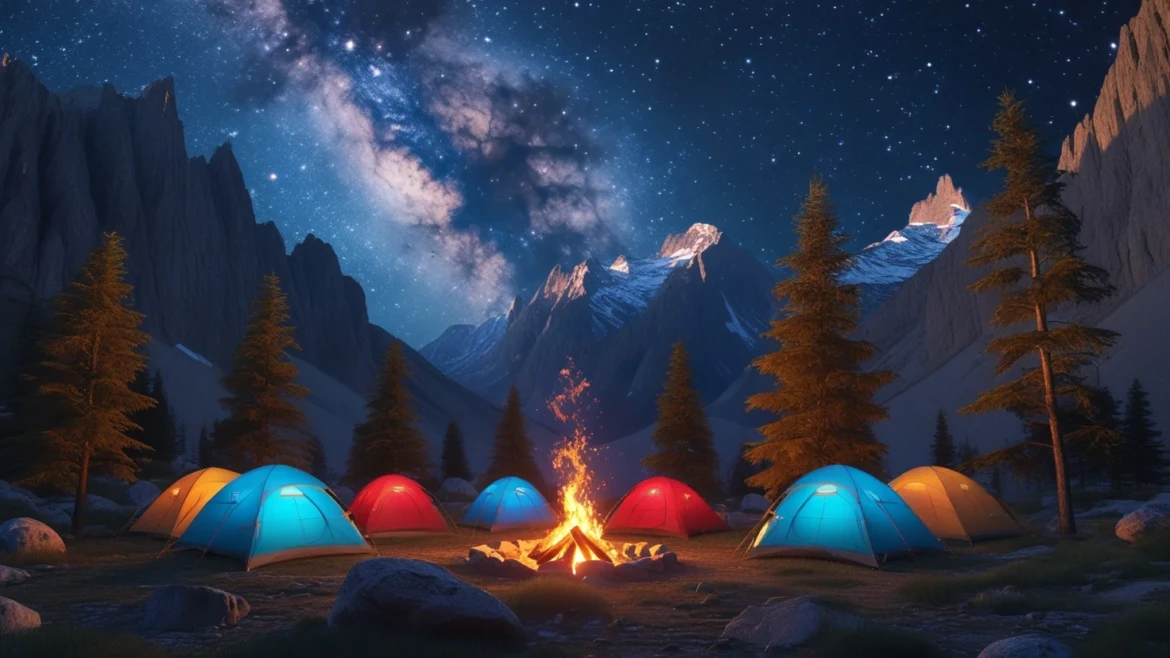Have you ever wondered why people leave behind the comfort of their cozy homes—or even the luxury of a hotel room—to sleep under the stars in a tent? What is it about the chill of the mountain wind, the flicker of a campfire, and the eerie silence of the wilderness that pulls so many toward the wild? The answer lies in the intoxicating blend of freedom and adventure that only camping can offer. It’s that primal joy of reconnecting with nature that lures campers from across the world, especially to destinations like Hunza. Camping in Hunza is more than a getaway—it’s a soul-stirring journey into the heart of nature’s raw elegance.
Nestled in the heart of the Karakoram mountain range in northern Pakistan, Hunza Valley is a treasure trove for campers and nature enthusiasts. Rich in history and culture, Hunza was once a princely state known for its strategic location along the ancient Silk Route. The valley has long fascinated travelers with its tales of longevity, peace, and mystique. This is not just a destination—it’s an experience, a canvas of snow-draped peaks, turquoise lakes, high-altitude meadows, and star-lit skies. If you’re planning your first-ever camping trip, this comprehensive travel guide on camping in Hunza will walk you through the best camping spots, how to get there, and tips to make the journey safe and unforgettable.
1. Eagle’s Nest (Duikar)
Duikar, better known as Eagle’s Nest, is just a 20 to 30-minute drive from Karimabad. Perched high above the valley, it offers one of the most breathtaking panoramic views of Ultar Sar, Ladyfinger, and the iconic Golden Peak. At sunrise and sunset, the mountains ignite in hues of orange and gold, a spectacle that draws photographers and romantics alike. Though accessible by a well-paved road, be sure to pack warm clothing—nights are bone-chilling even in the summer. You can pitch your tent near the viewpoint, and some nearby guesthouses allow use of their restrooms or kitchens for a small fee. Just remember, there are no shops up here, so bring your own supplies.
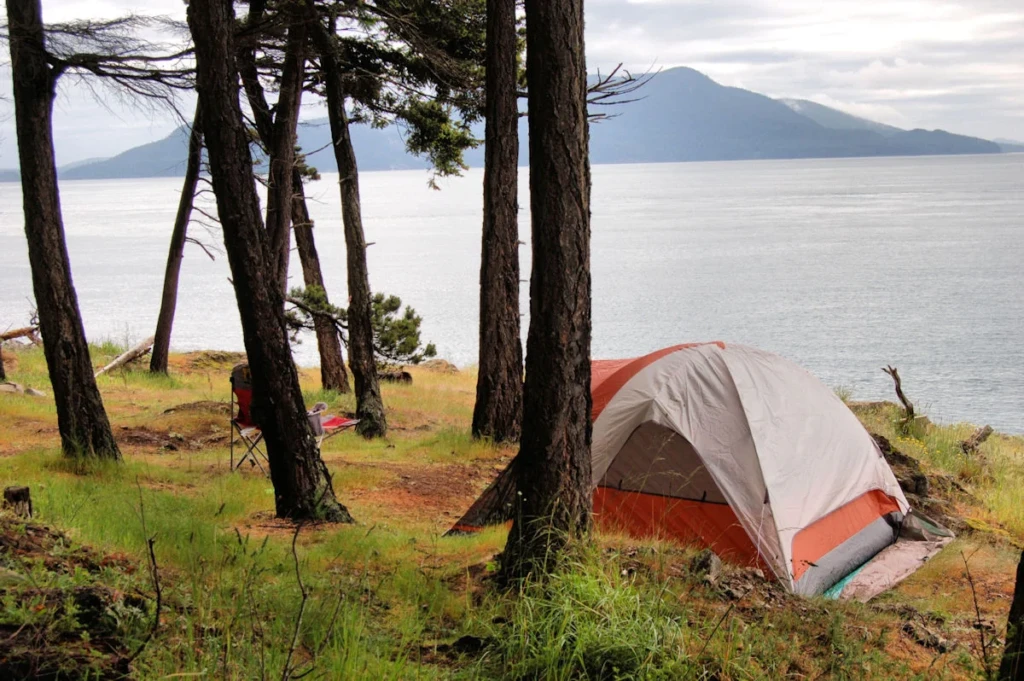
2. Attabad Lake
About an hour’s drive from Karimabad lies Attabad Lake, formed by a massive landslide in 2010. Its surreal turquoise water and steep rocky backdrop make it one of Hunza’s most unique camping destinations. Whether you’re looking to kayak, take a boat ride, or simply soak in the scenery, Attabad is a dream come true. Several camping zones line the lake’s edge, where you can rent gear or even boats from local vendors. For the best experience, arrive before sunset to set up camp. While mobile network signals are weak here, small cafes nearby serve warm snacks, making evenings around the fire even cozier.
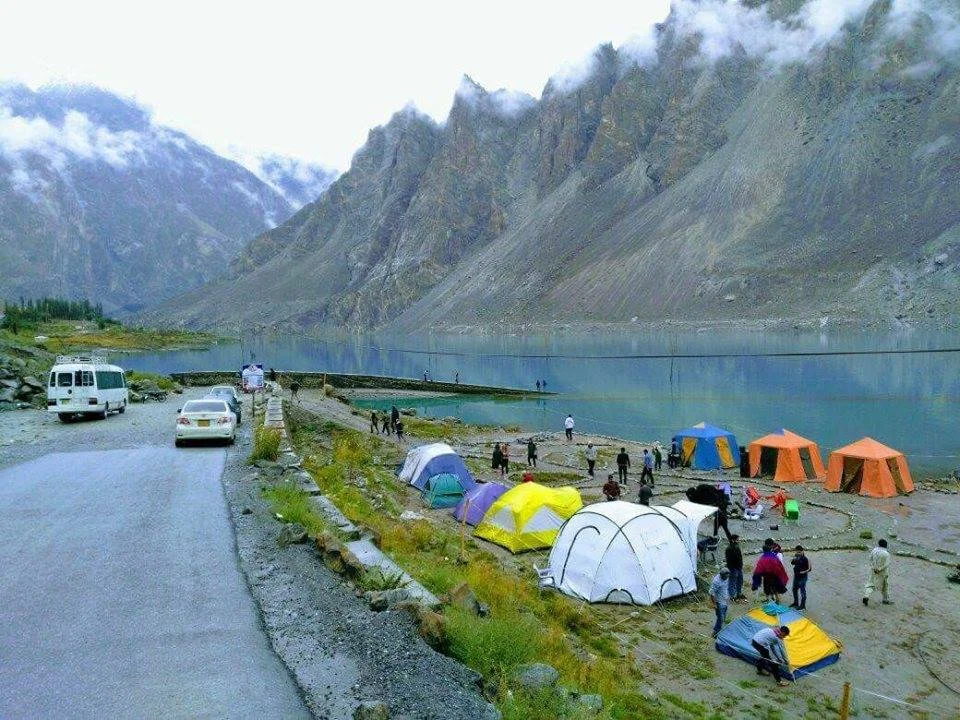
3. Hopper Valley (Nagar)
Hopper Valley, a gem on the Nagar side of Hunza, is about a 45-minute drive from Karimabad. Cross the Hunza-Nagar bridge and you’ll find yourself in a land of glaciers, meadows, and some of the most authentic cultural encounters in the region. The views of Golden Peak and Rakaposhi are nothing short of stunning. You’ll need a 4×4 vehicle for the final stretch, and basic supplies should be packed ahead of time since shops are scarce. First-time campers will be glad to know that local guides are available in this area, often hailing from nearby villages, and can offer valuable assistance with navigation, cultural insights, and safe camping practices. Hiring a local guide can enhance your experience while also supporting the local economy. Setting up camp near the glacier offers both beauty and a sense of seclusion. Cold-weather gear is a must, even in the heart of summer.
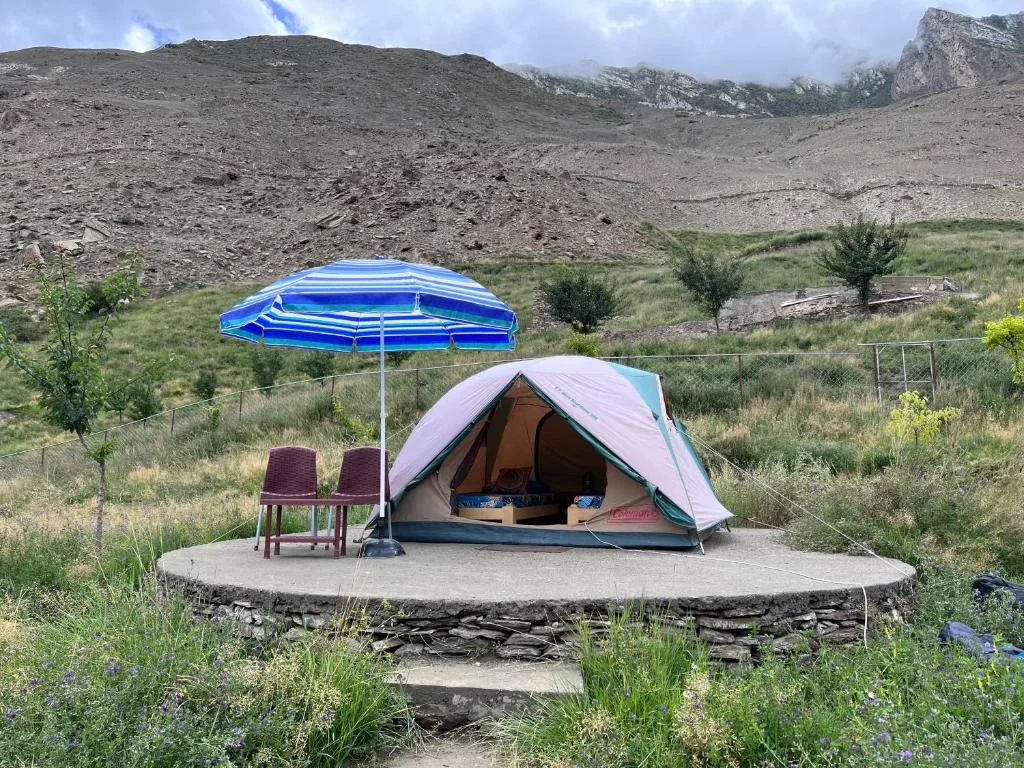
4. Passu
If surreal mountain shapes are your thing, head two hours north to Passu in Upper Hunza. With its distinctive cathedral-like peaks—known as the Passu Cones—this location is a magnet for adventurers and photographers. Safe camping areas can be found near the Passu Suspension Bridge, and while the conditions are often windy, the scenery is unbeatable. Waterproof tents and quality sleeping bags are essential here. Don’t miss the chance to try local dishes at nearby cafés, offering a warm touch of Hunza hospitality after a long day in the cold.
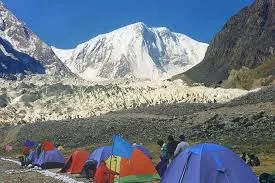
5. Altit & Baltit Fort Area
For those wanting a mix of nature and history, camping near the ancient Altit and Baltit Forts in Karimabad is the perfect blend. You can set up camp in orchards or terraced fields with Rakaposhi looming in the background. The area is rich in culture and ideal for families or beginners. Locals are often happy to provide space near their homes, and you’re never far from essential amenities like restrooms, restaurants, or shops. After a day of touring the majestic forts, relax under the stars with a view few places can match.
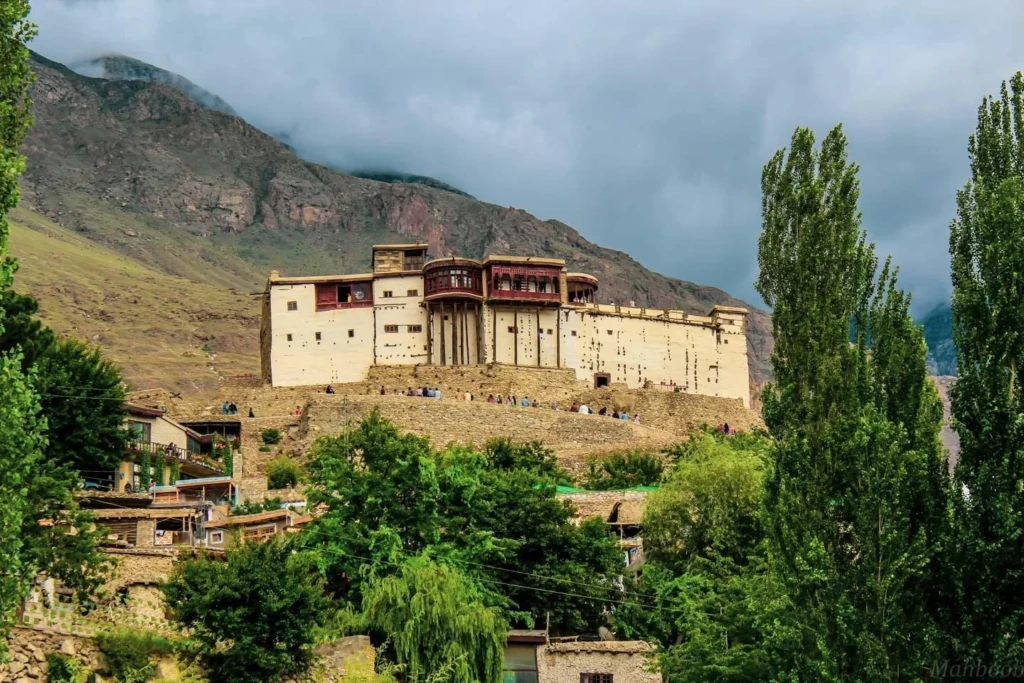
6. Misgar Valley
Tucked away near Sost, about three hours from Karimabad, Misgar Valley offers raw natural beauty far from the crowds. It’s the place to truly unplug—no shops, no signals, just the gentle rush of rivers and the echo of the mountains. A 4×4 is necessary for this journey, and it’s a good idea to inform local community centers or authorities before pitching your tent. Pack all your essentials and be ready for a rugged, soul-refreshing adventure.
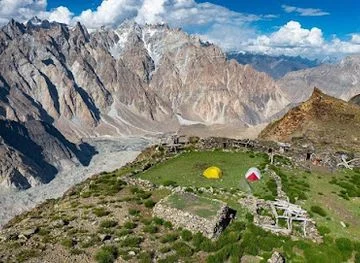
7. Chipursan Valley
Even deeper into the wilderness is Chipursan Valley, located beyond Sost and around four hours from Karimabad. This valley, home to the Wakhi people, is rich in both culture and scenery. With high-altitude villages and untouched landscapes, it’s ideal for campers who want to explore something truly offbeat. The journey is long and road conditions vary, especially after rain, but the reward is well worth the challenge. Sometimes, permission is required from local authorities, so plan ahead and always respect local customs.
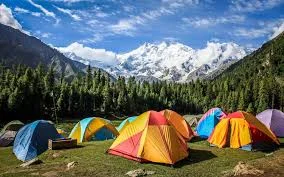
8. Rush Lake
Rush Lake is not for the faint of heart—but if you’re an experienced trekker with a passion for high-altitude camping, it might just be your holy grail. Situated at 4,694 meters above sea level and accessible via a multi-day trek through Hopar Glacier, Rush Lake is one of the highest alpine lakes in the world. You’ll need at least 2–3 days of solid hiking, but the trek can be managed with the help of a knowledgeable local guide even if you have only moderate fitness and no prior trekking experience. Local guides and porters are available and highly recommended for navigation and safety. Base camp is usually set up at Barpu Glacier before the final push to the lake. The views of Spantik, Ultar Sar, and Miar Peak from the top are nothing short of otherworldly.
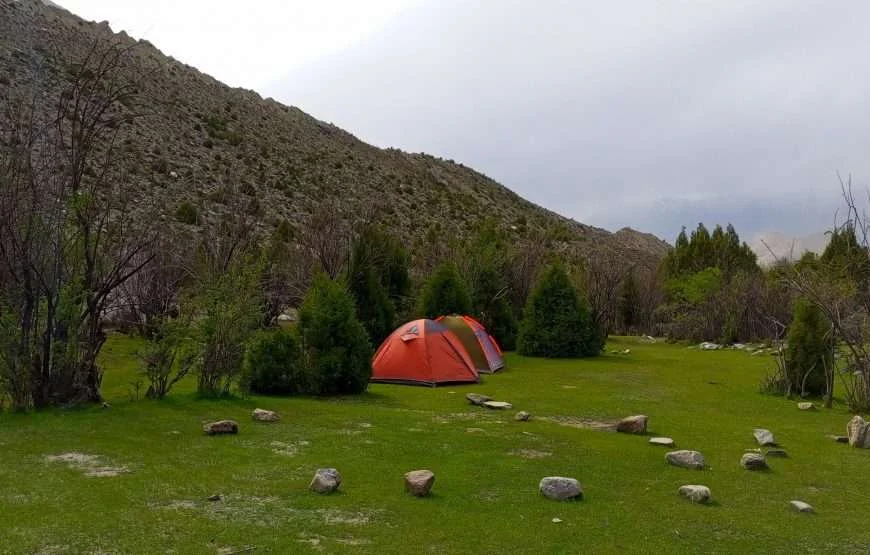
Best Time for Camping in Hunza
If you’re planning your trip between May and October, you’re in luck—that’s the best window for camping in Hunza. July and August are the most popular months, but they’re also busier. Nights can be freezing even in summer, so pack in layers. You don’t need permits for most places, but some remote valleys may require local clearance. Camping gear can be rented in Karimabad, but bringing your own is recommended for better quality and comfort. Avoid risky areas like riverbanks or unstable slopes, and always let someone know your itinerary.
General Tips for Camping in Hunza
Leave no trace. Hunza is still relatively untouched, and keeping it that way is a responsibility all visitors share. Use reusable water bottles, avoid plastic, and carry your waste back with you. Whenever possible, use eco-friendly camping gear, such as biodegradable soap, solar-powered lights, and compostable utensils. Dispose of waste properly by bringing trash bags and separating recyclables. If you come across a designated disposal or recycling area, use it—or take everything back with you. Responsible camping in Hunza helps preserve its beauty for future adventurers.
Final Thoughts
Whether you’re a lone explorer seeking silence or a lively group planning bonfire nights, camping in Hunza is the ultimate way to escape into the wild. With proper planning, a spirit of adventure, and deep respect for the land and its people, your experience of camping in Hunza can become one of the most unforgettable journeys of your life.
So pack that tent, lace up your boots, and head north. Camping in Hunza isn’t just about the destination—it’s about the transformation it brings. The wild beauty is calling—and it’s ready to change you forever.


